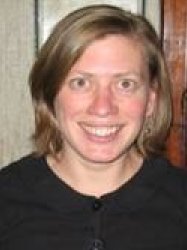
Spatial targeting of disease control: identifying multiple, unknown sources

Malaria modeller Dr. Robert Verity publishes article on spatial targeting of disease control using geographic profiling.
“From a mathematical point of view, the problem of identifying multiple unknown sources can be divided into two parts: first, estimating where the sources are, and second, estimating which points came from the same or different sources. Each of these problems is easy to solve if we know the answer to the other part, whereas the problem is almost impossible to solve all in one go" .
– Dr. Robert Verity
Malaria Modeller
Malaria modeller Dr. Robert Verity (formerly of The School of Biological and Chemical Sciences, Queen Mary University of London) has today published an article in the Journal Methods in Ecology and Evolution.
“From a mathematical point of view, the problem of identifying multiple unknown sources can be divided into two parts: first, estimating where the sources are, and second, estimating which points came from the same or different sources. Each of these problems is easy to solve if we know the answer to the other part, whereas the problem is almost impossible to solve all in one go" .
– Dr. Robert Verity
Malaria Modeller
The article, entitled “Spatial targeting of disease control: identifying multiple, unknown sources”, focuses on the use of mathematical models for geographic profiling.
Geographic profiling (GP) was originally developed as an analytical tool in criminology, where it uses the spatial locations of linked crimes (e.g. murder, rape or arson) to identify areas that are most likely to include the offender's residence. The technique was pioneered by Dr. Kim Rossmo, and has been successfully carried over into biology by Dr. Steve Le Comber, Dr. Mark Stevenson, Dr. Robert Verity and other researchers at Queen Mary University of London.
The article presents a fairly drastic overhaul of the mathematics of the original method, placing it on a firm Bayesian foundation. By making the explicit assumption that there may be multiple “sources” (e.g. muddy puddles, clinics, individuals) that make a significant contribution to the overall spatial pattern of disease, they are able to develop a true multiple-source model. Through the use of modern statistical methods the likely location of these sources can then be inferred, using only the spatial locations of the diseased individuals as input. Using a real world example of a malaria outbreak in Cairo it can be shown that this new method can lead to a drastic improvement in search efficiency compared with traditional search methods. It is hoped that such methods will lead to better targeting of interventions, more efficient use of resources, and ultimately, lives saved.
Contour map showing the spatial locations of P. vivax malaria cases (black circles). The empirically identified sources (blue squares) lie high up the posterior profile, meaning they could be rapidly identified using a targeted search.
"The problem of identifying unknown sources requires that we look over all possible ways that the observed data points can be split into different groups. The number of these groups is enormous - for just 80 points the number of groups is larger than the number of protons in the observable universe! Clearly exploring this space by brute force is impossible, and so we need to turn to modern statistical techniques for a practical solution" said Dr. Verity.
According to Dr. Le Comber: "Many observations in biology consist of points that emerge by spreading from one or more unknown sources, and so we envision that our model may be useful in areas ranging from epidemiology to invasive species control."
Download the statistical software
This new research is accompanied by a statistical package, Rgeoprofile, available for download from the Le Comber Laboratory website.
About the authors
Dr. Steven C Le Comber runs the Le Comber Laboratory for Geographic Profiling within the School of Biological and Chemical Sciences, Queen Mary University of London with Dr. Mark D. Stevenson and Dr. Richard A. Nichols. Dr. Kim Rossmo is Director of the Centre for Geospatial Intelligence and Investigation, Texas State University, USA.
Read the full Queen Mary University press release here.
Article text (excluding photos or graphics) © Imperial College London.
Photos and graphics subject to third party copyright used with permission or © Imperial College London.
Reporter

Alison Reynolds
School of Public Health

Contact details
Email: press.office@imperial.ac.uk
Show all stories by this author



